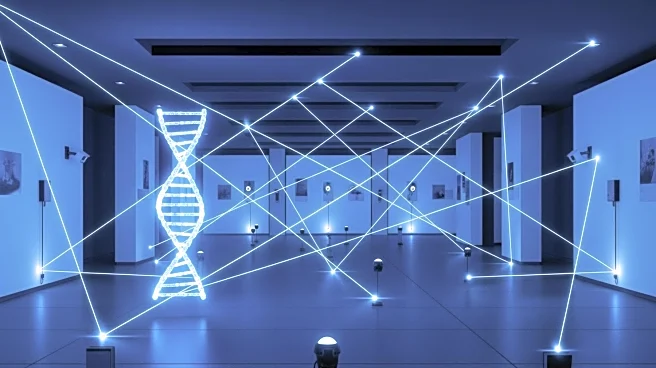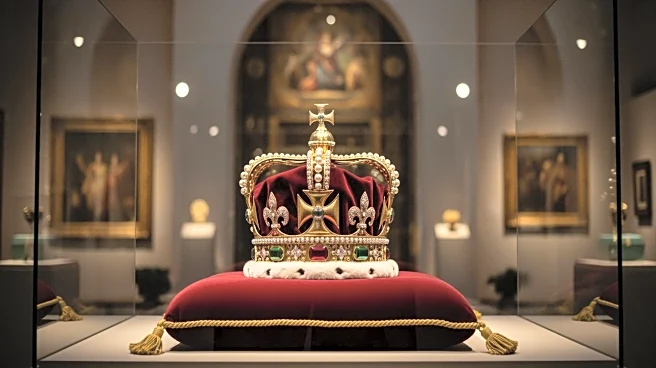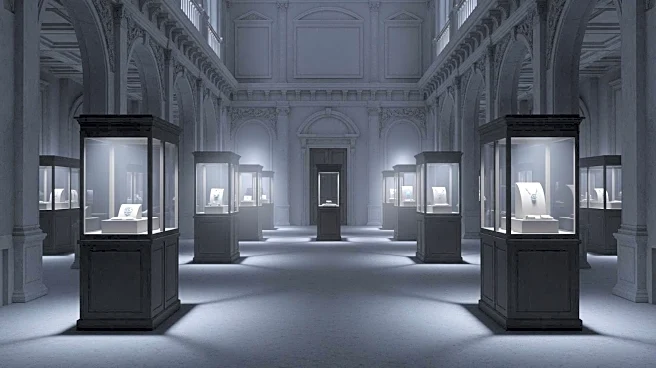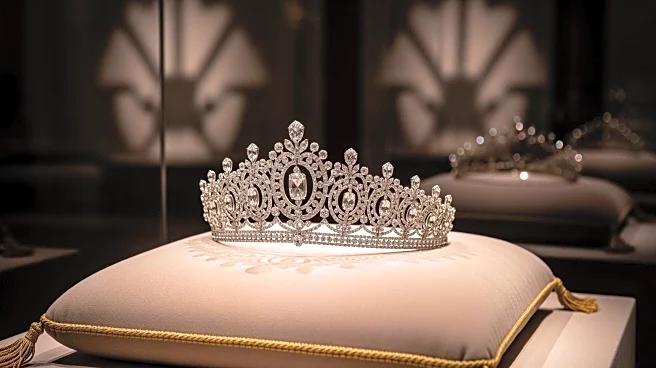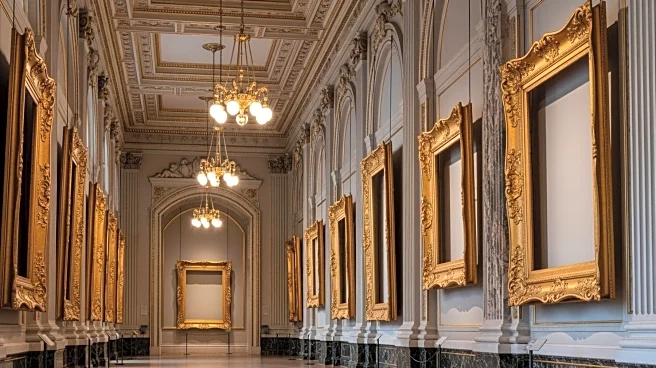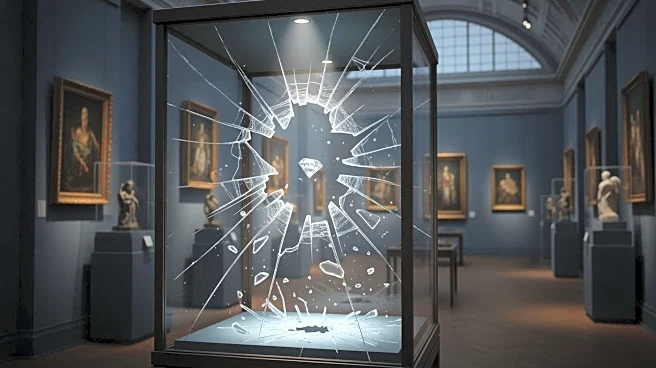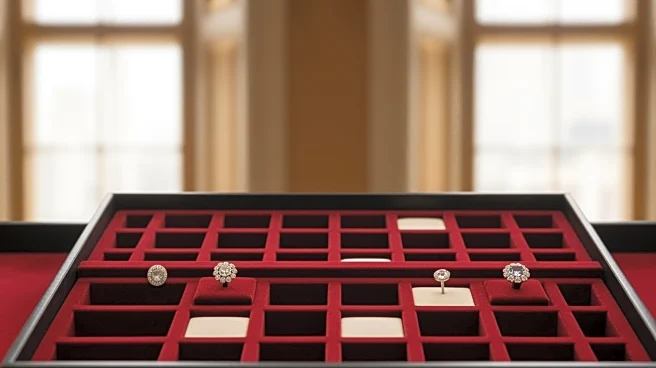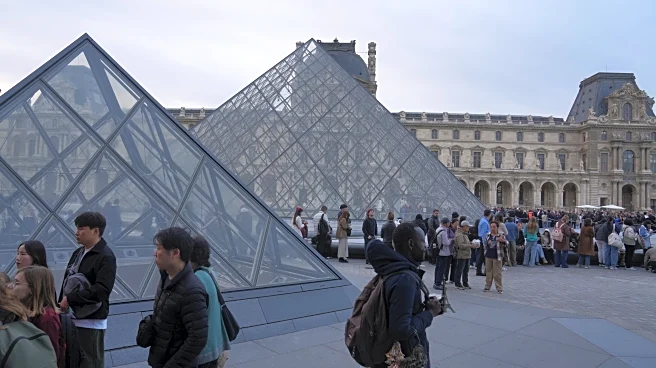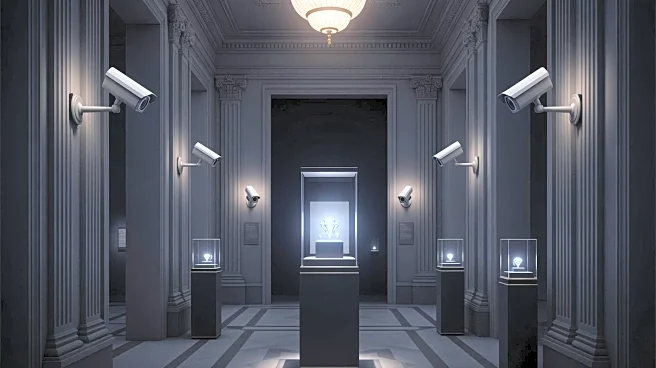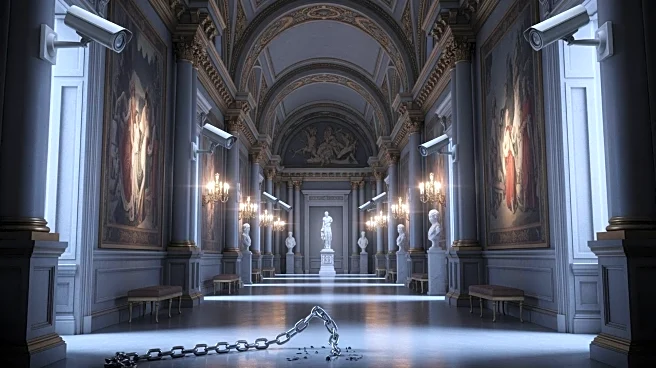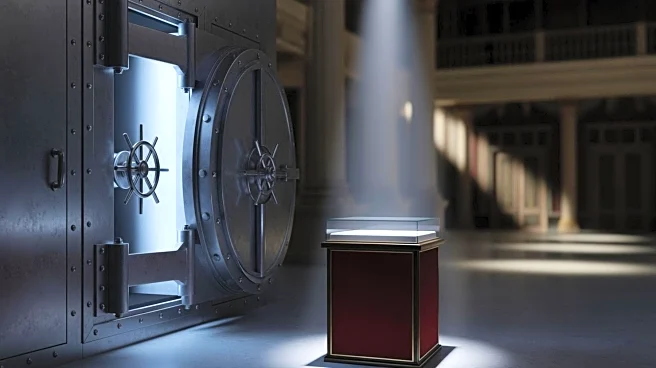What's Happening?
A daring daylight heist at the Louvre Museum in Paris resulted in the theft of eight pieces of jewelry, including items once owned by French royalty, valued at approximately €88 million. The thieves left behind over 150 DNA samples and fingerprints on various
items used during the burglary, such as helmets and gloves. The heist occurred in the Apollo Gallery, and despite the museum's alarm systems functioning correctly, the thieves exploited a blind spot in the security coverage to gain access. The Louvre's director is advocating for enhanced security measures, including a police station within the museum and improved CCTV coverage.
Why It's Important?
The heist at one of the world's most visited museums highlights significant security vulnerabilities in cultural institutions. The theft of such high-value items not only represents a substantial financial loss but also a cultural one, as these artifacts are part of France's national heritage. The incident underscores the need for museums globally to reassess and upgrade their security protocols to protect valuable collections. The successful recovery of the stolen items is crucial to preserving historical artifacts and maintaining public trust in museum security.
What's Next?
French authorities are prioritizing the analysis of the DNA samples to identify the perpetrators, with results expected soon. The Louvre's director is pushing for immediate security enhancements, including the establishment of a police presence within the museum. The incident is likely to prompt other museums to review their security measures to prevent similar occurrences. The media attention on the robbery may deter the thieves from attempting to sell the stolen items, increasing the chances of recovery.
Beyond the Headlines
The heist raises ethical questions about the security responsibilities of cultural institutions and the balance between public access and artifact protection. It also highlights the potential for technological advancements in security systems to prevent such incidents. The event may lead to increased collaboration between museums and law enforcement agencies to develop more effective security strategies.
